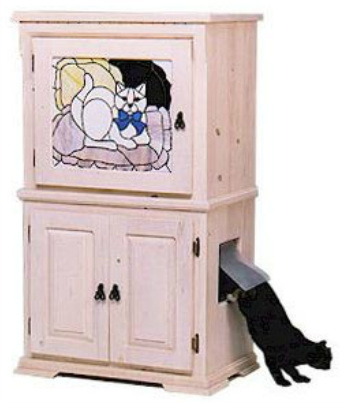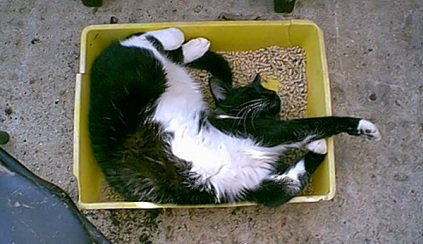Cat Toileting Solutions
Cat Toileting Problems Solved
|
Step One: Understand the causeUnderstand why your cat is toileting inappropriately.
If you have considered the reasons and are still not sure, try keeping a diary of all the incidents. to allow you to see patterns. Step Two: Vet checkConsider a vet check for your vat. It is essential that physiological causes be treated or ruled out, prior to starting any behavioural therapy.
You cannot tell simply by looking at your cat if they are healthy and well. Urinary tract issues often have few symptoms, other than failing to use the litter box. If you see your cat straining to toilet, toileting often or passing blood in their urine or faeces, please get your cat to the vet as soon as possible. Step Four: Long-term solutionsThese depend on the cause of the issue. If the cause is anxiety, you will need to relieve your cat's stress. If the cause is your multi-cat household, you may need to reconfigure toilet habits and interactions between cats.
|
Step Three: Short-term solutionsLitter box analysisExamine your litter box thoroughly! Not just the waste contents but also the style and position,of tray and the type of litter used. Litter box issues can often be resolved by trial and error.
Changing litter trays, litter or the position of the box may be a simple solution to your issue. Stress reliefRelocating your cat to a different area of your home may prevent their anxiety levels rising. For example, if your cat reacts to people entering your property, place them where they cannot encounter people.
Calming agents such as lavender, Feliway (cat appeasing pheromone) and veterinary medication may provide relief for your cat's anxieties. Ask your vet. Remember short-term solutions rarely solve the problem but they may give temporary relief. |
Toileting tips1. Cats need a large enough litter tray to be able to stand in it and to turn around.
2. If your cat is using their litter box as a bed or play area, they are unlikely to toilet there.
3. There are many types of litter tray. Covered or open - your cat may have a different preference to you. Litter boxes can also be built into furniture. |
|



